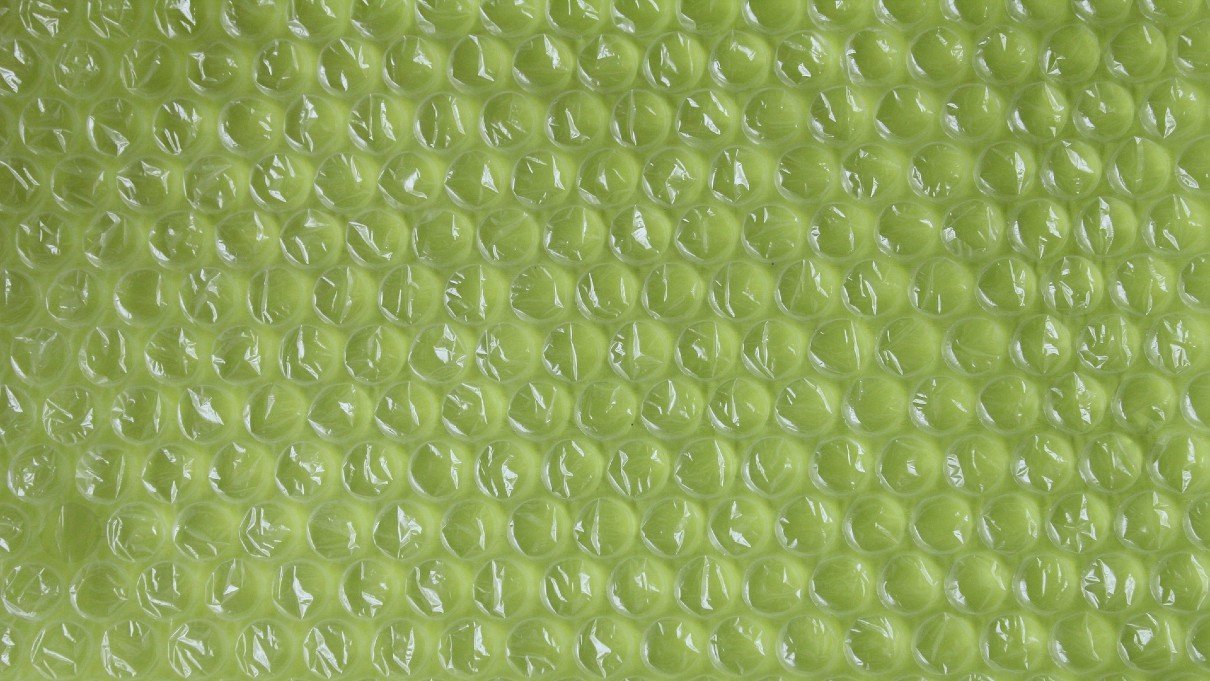Can You Recycle Bubble Wrap?

With the rising popularity of online shopping, home delivery has become the norm. But with that comes one major problem – the accumulation of bubble wrap and other packaging materials in our homes.
So, what are you going to do with all that bubble wrap in the long run? Are you just going to throw it out? Can you even recycle it?
If these are the questions that plague you, you have come to the right place. Today’s post is going to talk about this and so much more.
Is bubble wrap garbage or recycle? Can bubble wrap go in recycling?
While bubble wrap is recyclable, it isn’t accepted by most curbside programs. So, you shouldn’t throw it in your recycling bin.
Instead, it should be taken to drop-off points and recycling centers that accept it.
Since bubble wrap is made of the same material as plastic film, you can use the American Chemistry Council’s Plastic Film Recycling Program to find a suitable drop-off location.
Alternatively, you could use the Earth911 directory.
If you throw bubble wrap in your recycle bin, it can cause a serious contamination issue at the recycling plant.
Since it is made of a soft low-density polyethylene film (LPDF), it can tangle with other items being recycled, jam the machinery and bring the whole recycling process to a standstill.
This not only costs time and money to fix but also puts any technician called to do the fixing at risk.
What’s more, this can lead to everything in your recycle bin ending up in the landfill and may even get you fined by your local authorities.
So even if you want to recycle a paper mailer that is lined with bubble wrap, remember to separate the two materials and deal with them separately.
How long does it take for bubble wrap to decompose?
Bubble wrap takes 10 to 1,000 years to decompose.
Should you pop bubble wrap before recycling?
Yes, you should pop all the bubbles before recycling bubble wrap.
How do you properly get rid of bubble wrap?
The best way to get rid of bubble wrap is to look for a drop-off location where you can take it for recycling. Otherwise, it will end up in a landfill.
Is bubble wrap eco-friendly?
No, bubble wrap isn’t eco-friendly.
First of all, it is difficult to recycle.
Secondly, it is made of less than 20% of recycled content.
Finally, storing it in a compacted form is difficult – to do so, you will have to get an expensive machine that is quite carbon-intensive.
Is there an eco-friendly alternative to bubble wrap?
There are several eco-friendly bubble wrap alternatives out there.
Some of the most popular ones include:
Corrugated packaging
Made of a fluted sheet of paper sandwiched between two liners, corrugated packaging can be either thin and flexible or thick and stiff. Therefore it can be used for a variety of packing purposes.
More importantly, it is made from recycled materials, can be recycled, and is even compostable.
And since it’s made from birch and pine trees that grow really fast, it is quite renewable as well.
Mushroom packaging
This type of packaging is actually grown instead of manufactured. And since it looks like foam, it can replace both Styrofoam and bubble wrap.
A recent invention, mushroom packaging is created by growing a mixture of agricultural residue and sprout fungus around a mold.
The process usually takes about a week and the mold can be replaced by any item of your choosing. So if you’re looking for a type of packaging that can be manipulated to perfectly fit around oddly shaped items, this is it.
And to top it all off, mushroom packaging is renewable biodegradable, fire-resistant, and stronger than Styrofoam.
Greenwrap
Not only is greenwrap biodegradable and compostable, but it’s also recyclable.
Made of tissue sandwiched between layers of kraft paper, greenwrap is a great alternative to bubble wrap.
It is great for packing fragile items and even increases packing efficiency.
Seaweed packaging
Made of a thin brown seaweed film, this is yet another recent invention.
Not only does it absorb large amounts of carbon dioxide while being processed, but it also biodegrades quickly – even faster than fruit.
Moreover, it dissolves in water and is edible. As such, it is popularly used by whisky brands to create whiskey capsules.
Indented Kraft paper
Indented Kraft paper has ridges and bumps that add some texture to it and make it better at cushioning.
While it isn’t as cushioning as bubble wrap or greenwrap, it is still quite functional.
Biodegradable packing peanuts
Made of cornstarch, biodegradable packing peanuts are just as efficient as Styrofoam ones, making them a good bubble wrap alternative.
What’s more, they dissolve in water and aren’t toxic.
So if you have a pet or toddler who is always swallowing things, these would be a great fit.
What can I do with leftover bubble wrap?
Before you resort to disposing of leftover bubble wrap, it is always a good idea to find ways to reuse it.
Here are a few ways you could do this:
Use it for shipping
Even if you’ve used it before, bubble wrap can always be used for shipping again. S
o whether you’re sending a gift to your friends or packing something for a client, you can always use your leftover bubble wrap.
Protect your groceries
Wrapping your groceries with bubble wrap can keep them cooler for longer as you walk home or go about doing errands.
This can also keep delicate produce like tomatoes from bruising.
For maximum efficiency, you can even line the insides of your grocery bags with bubble wrap.
Insulate your garden
During the winter, lining the inner sides of your pots/planters with bubble wrap before planting will keep your plant from freezing.
You can even take things a step further and cover the plants with bubble wrap too.
Reuse before you recycle
Since bubble wrap doesn’t go hand in hand with sustainability, you’re better off with any of the eco-friendly alternatives we listed above.
But if you just have to use bubble wrap, try to get the most out of it – reuse it as much as possible before you recycle it!
